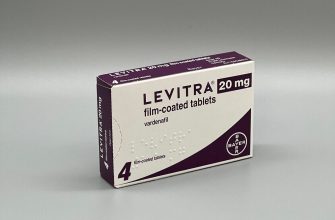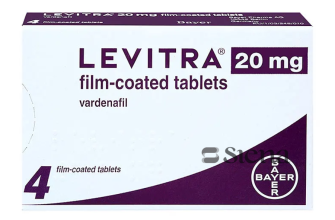Avoid fraudulent Canadian online pharmacies by verifying their legitimacy with the Canadian International Pharmacy Association (CIPA). CIPA provides a list of accredited pharmacies, ensuring you’re dealing with a reputable source. Checking this list is your first line of defense against scams.
Scrutinize the website carefully. Look for a physical address, contact information (including phone number and email address), and a detailed “About Us” section. Red flags include poor grammar, generic stock photos, and missing licensing information. A lack of transparency often signals a dishonest operation.
Compare prices across multiple reputable online and physical pharmacies. Unbelievably low prices are a significant warning sign. Legitimate pharmacies may offer competitive pricing, but suspiciously low offers almost always indicate a counterfeit or substandard product.
Prioritize your health. Counterfeit medications can be ineffective, contain harmful ingredients, or have incorrect dosages. The potential risks outweigh any perceived savings from purchasing medications from unverified sources. Always prioritize your safety and well-being.
Report suspicious pharmacies to Health Canada. They actively investigate and prosecute fraudulent operations. Reporting helps protect other consumers and contributes to a safer online pharmaceutical market. Your vigilance makes a difference.
Canadian Pharmacy Rip-Offs: How to Spot a Scam
Check the pharmacy’s license and registration with your country’s regulatory bodies. Legitimate Canadian pharmacies will readily display this information.
Verify the pharmacy’s physical address. A legitimate pharmacy has a verifiable street address, not just a PO box or virtual address. Use Google Maps or a similar service to check its existence.
Scrutinize the website’s design and content. Look for professional-looking websites with secure connections (HTTPS). Avoid sites with poor grammar, broken links, or excessive claims.
Investigate customer reviews and testimonials. Many scam websites feature fabricated positive reviews. Cross-reference reviews across multiple platforms. Suspicious reviews should raise red flags.
Examine the pricing. Prices significantly lower than average often signal a scam. Be wary of unbelievably cheap medications.
Confirm the payment methods. Legitimate pharmacies typically accept various secure payment methods. Avoid those only accepting wire transfers or cryptocurrency; these are frequently used by scammers.
Contact the pharmacy directly. Attempt to contact them via phone and email. Poor or nonexistent communication indicates a potential scam.
Report suspicious pharmacies to relevant authorities. If you suspect a pharmacy is operating illegally, report it to your local health authorities or consumer protection agency.
Use only reputable online pharmacies recommended by healthcare professionals. These usually have a proven track record and adhere to strict regulations.
Identifying Legitimate Canadian Pharmacies: Verification Steps and Red Flags
Check the pharmacy’s registration with the relevant provincial regulatory body. Each province has its own College of Pharmacists; verify the pharmacy’s license directly through their website. Don’t rely solely on information found on the pharmacy’s site.
Look for a physical address. Legitimate pharmacies have a verifiable street address in Canada. Avoid those listing only PO boxes or international addresses.
- Red Flag: An address that’s difficult to locate or verify independently.
Examine their contact information. A legitimate pharmacy provides multiple ways to contact them – phone, email, and preferably a fax number.
- Red Flag: Only offering email contact or an unusually formatted phone number.
Scrutinize their website. Check for secure payment gateways (HTTPS). Look for professional design and accurate information, free of grammatical errors and inconsistencies. The site should clearly state its licensing and regulatory information.
- Red Flag: A website with poor design, broken links, or suspicious pricing that’s significantly lower than other Canadian pharmacies.
- Review online reviews and testimonials. Look for consistent positive feedback. Be wary of overwhelmingly positive reviews without any negative ones – this can be a sign of manipulation.
- Beware of unsolicited emails or ads. Legitimate Canadian pharmacies rarely use unsolicited advertising for prescription drugs.
- Confirm the pharmacist’s credentials. Many reputable pharmacies list their pharmacists’ profiles with contact information and certifications.
If something feels off, it probably is. Trust your instincts and err on the side of caution. Consider using a pharmacy recommended by your doctor.
Protecting Yourself from Canadian Pharmacy Scams: Prevention and Reporting
Check the pharmacy’s license and registration with your provincial regulatory body. Verify this information independently, not just relying on the website.
Always look for a physical address and contact information; avoid pharmacies with only PO boxes or email addresses.
Scrutinize the website carefully for spelling and grammatical errors – a professional website suggests legitimacy.
Be wary of unbelievably low prices. If a deal seems too good to be true, it likely is.
Use secure payment methods. Avoid using wire transfers or prepaid debit cards, which offer little protection.
Read online reviews and testimonials from other customers. However, be aware that reviews can be manipulated.
Reporting Suspicious Pharmacies
Report suspected fraudulent pharmacies to Health Canada. Their website provides clear instructions on how to submit a complaint.
Contact your provincial regulatory body. They can investigate and take action against unlicensed or illegal operations.
File a report with the Better Business Bureau. This alerts other potential customers about the questionable business.
If you experienced financial loss, consider contacting your bank or credit card company to dispute the charges.
Additional Safeguards
Only purchase medication from pharmacies you know and trust. Avoid ordering medications from unfamiliar websites.
Consult your doctor or pharmacist before ordering any medications online. They can help verify the legitimacy of the source.
Never share your personal or financial information unless you are completely certain of the pharmacy’s authenticity.
Safe Practices and Reporting Mechanisms for Victims
Verify the pharmacy’s legitimacy using online resources like the College of Pharmacists of your province or territory. Check for a physical address, licensing information, and contact details. Avoid pharmacies without this information.
Always pay using secure methods like credit cards with buyer protection. This offers some recourse if fraud occurs. Avoid wire transfers or prepaid debit cards – they offer little to no protection.
Never share personal or financial information unless you are absolutely certain of the pharmacy’s legitimacy. Scrutinize the website for security features (HTTPS).
If you suspect you’ve been scammed, immediately contact your bank or credit card company to report fraudulent activity. Document everything: website addresses, transaction details, and communication with the pharmacy.
Report the suspected scam to the appropriate authorities. This includes reporting to your provincial or territorial consumer protection agency. The Canadian Anti-Fraud Centre (CAFC) is another valuable resource.
| Agency | Contact Information |
|---|---|
| Canadian Anti-Fraud Centre (CAFC) | 1-888-495-8501 or report online at https://www.antifraudcentre-centreantifraude.ca/report-signalez-eng.htm |
| Your Provincial/Territorial Consumer Protection Agency | Search online for “[Your Province/Territory] consumer protection” |
| Your Credit Card Company | Contact information on your card or online banking |
| Your Bank | Contact information on your bank statements or online banking |
Keep records of all communications and transactions, including screenshots and emails. This evidence will be critical for investigations and potential recovery of funds.
Consider consulting a lawyer if you have suffered significant financial loss. Legal counsel can guide you through the process of recovering your money or pursuing legal action.










